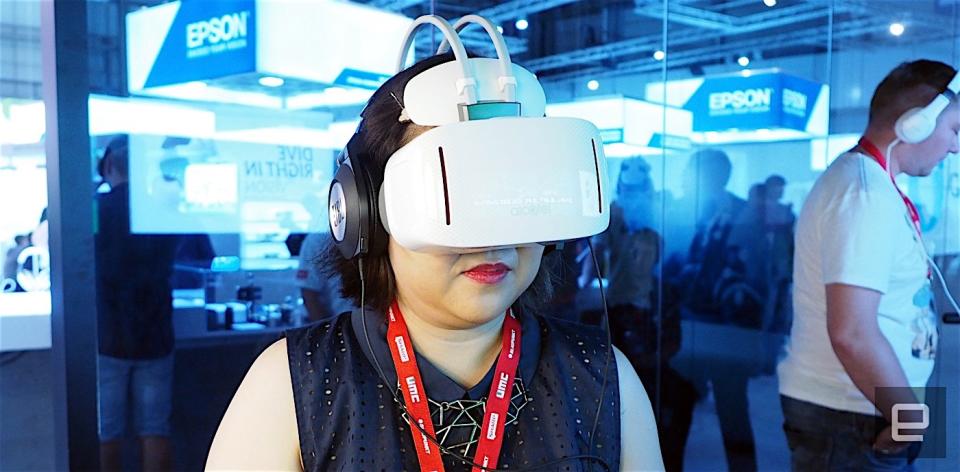Alcatel's standalone VR headset is a tough sell
The idea sounds neat, but Gear VR and Daydream means it has its work cut out for it.

While Samsung's Gear VR requires a smartphone and full-fledged headsets like the Oculus Rift require a computer, Alcatel's newly announced Vision doesn't need either. Indeed, it's a standalone VR headset, which is still something of a rarity in the VR world. Intel announced its own Project Alloy about a month ago and smaller companies like Sulon have come out with prototypes, but the Vision is the first working model I've actually had the chance to try on. As cool as it is though, I have to admit it faces stiff competition from the likes of Gear VR as well as upcoming Daydream-compatible phones and headsets.
At first glance, the Vision looks more like a kind of fighter helmet rather than a VR headset. Instead of using straps, the Vision utilizes a sort of brace that fits around your head. On the front is a set of goggles, which is then attached to a large back pad via a pair of flexible plastic arms. The reason for such bulk though, is that the 3,000 mAh battery is actually located in the rear. The result is a surprisingly balanced and comfortable fit despite its size.
In fact, I didn't feel weighed down at all while wearing it. I was a little concerned with the lack of adjustable straps, but the Vision clamped on my head pretty securely. I did think it needed some kind of additional nose pads -- it kept slipping a little on me -- but it was otherwise fine. The eyewear area was roomy enough for my glasses and the extra padding around it added to the overall comfort. There's a touchpad on the right temple, while the power key lies on top. It also has a headset jack to which you can attach your favorite pair of headphones.

Instead of a smartphone, the Vision comes equipped with a pair of 3.8-inch AMOLED displays, each with 1,080 x 1,020 resolution. I watched a couple of videos and played a game or two on the Vision and while the performance seemed fine, the resolution was a little blurry and the screen-door effect was apparent; definitely not any better than that of the Gear VR. It was still plenty immersive though, and I enjoyed tapping at the touchpad to zap away oncoming robots. On the inside, the Vision has specs that mimic most smartphones. It has an octa-core CPU, 32GB of storage, 3GB of RAM, Bluetooth, LTE WiFi as well as the usual accelerometer, gyro and proximity sensors. The Vision will apparently have around 3 hours of battery life.
It's unclear how much the Vision will actually be but we hear that it'll likely cost around $500 or $600. Seeing as you can get a Gear VR and a compatible smartphone for around that price, we're not sure if the Vision offers a compelling alternative, especially since the Samsung option appears to have a far wider content library. Plus, we've yet to see what Google has to offer in terms of Daydream-compatible handsets. Still, if you fancy a VR headset without the constraints of a phone or a PC, the Vision might be a good one to try out. It'll be available in China before the end of the year while the US should see it in early 2017.
Daniel Cooper contributed to this report.
We're live all week from Berlin, Germany, for IFA 2016. Click here to catch up on all the news from the show.












